Season’s Greetings from Eureka Brake & Automotive
Bryna Christensen • December 19, 2024
Wishing You a Joyous Holiday Season!

As the holiday season approaches, the team at Eureka Brake & Automotive wants to take a moment to extend our warmest wishes to all our valued customers. This special time of year is about joy, gratitude, and reflection, and we’re thankful for the trust and support you’ve shown us throughout the year.
As we celebrate this joyous season, we want to express our heartfelt thanks to each and every one of you. Your trust and loyalty mean the world to us. We’re grateful for the opportunity to serve you and look forward to many more years of keeping your vehicles in top shape.
From all of us at Eureka Brake & Automotive, we wish you a very happy holiday season filled with joy, peace, and wonderful memories. May your Holidays be bright and your travels be safe.
Sincerely,
Your Crew at 2nd & U
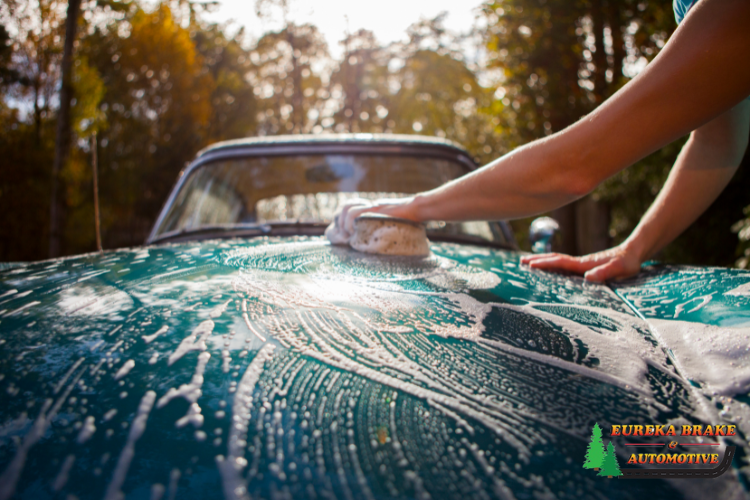
By Bryna Christensen
•
March 31, 2025
Winter weather can be harsh on your vehicle. From salted roads to icy conditions, all that wear and tear can add up. As we roll into spring, here’s why it’s so important to give your vehicle a thorough check-up: Road salt and grime can build up on your undercarriage and cause rust or damage to important parts. Temperature fluctuations can affect tire pressure and battery performance. Potholes and rough roads may have knocked your alignment out of place. Now is the perfect opportunity to get everything back in shape. At Eureka Brake & Automotive, we’ve got all the tips and services you need to ensure your vehicle is ready for the warmer months ahead. 5 SPRING MAINTENANCE TIPS CHECK YOUR TIRES- Winter driving can be tough on your tires, especially if you’ve hit a few potholes along the way. Spring is the perfect time to check for uneven wear, ensure proper inflation, and maybe even consider a rotation or replacement. Good tire health means better traction and improved fuel efficiency. CHANGE YOUR OIL AND FILTER- Regular oil changes are critical to keeping your engine running smoothly. After winter’s cold temperatures and extended idle times, your oil may have thickened or become dirty. Fresh oil ensures that your engine stays properly lubricated, helping to extend its life. INSPECT YOUR BRAKES- Your brakes have likely been working overtime during winter, especially if you've been driving on slick roads. At Eureka Brake & Automotive, we recommend having your brake pads, rotors, and fluid checked regularly, and spring is the perfect time to do it. Don’t wait for squeaks or grinding sounds—catch potential brake issues early! TOP OFF YOUR FLUIDS- Spring cleaning for your vehicle isn’t just about the outside. You should also make sure your essential fluids—like windshield washer fluid, coolant, brake fluid, and power steering fluid—are topped off. This keeps your vehicle running smoothly as you prepare for the hotter months ahead. WASH AND WAX- A good wash and wax is like a spring refresh for your vehicle’s exterior. Washing your vehicle removes any salt, mud, or grime buildup from winter, while waxing protects your paint and keeps your vehicle looking shiny and new. DON’T FORGET YOUR SUSPENSION AND ALIGNMENT Winter roads are filled with surprises—from potholes to ice patches. If you’ve noticed your vehicle pulling to one side or a rougher-than-usual ride, it’s time to have your suspension and alignment checked. Proper alignment extends the life of your tires, improves fuel efficiency, and ensures a smoother ride. At Eureka Brake & Automotive, our team of expert technicians are here to help you with all your maintenance needs from realigning your wheels to oil changes. We know how important it is to keep your vehicle in peak condition, and spring is the perfect time to give it the attention it deserves. Don’t wait for the heat of summer—get ahead of any potential issues with a spring tune-up! Schedule an appointment online or call us now at 707-443-2122! *Stay connected with us on social media for updates, tips, and special offers throughout the year. We love hearing from you and are always here to help with any automotive questions or needs you might have.
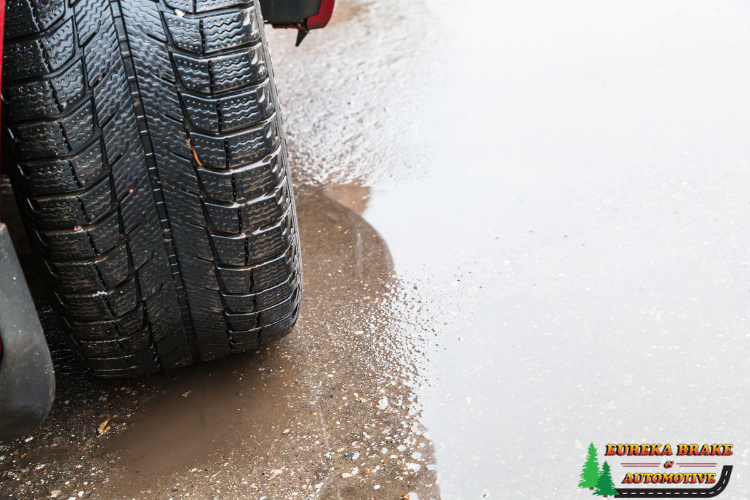
By Bryna Christensen
•
March 24, 2025
At Eureka Brake & Automotive, we understand how crucial it is to stay safe on the road. One of the most important innovations in automotive safety is the Anti-lock Braking System (ABS). Whether you're cruising the highways or navigating city streets, ABS plays a key role in preventing accidents by helping you maintain control of your vehicle. But how exactly does this system work? Let’s break down the science behind it. WHAT IS ABS? Anti-lock brakes are a safety feature designed to prevent your wheels from locking up during heavy braking. In emergency situations, or when road conditions are slick or uneven, locking the wheels can cause your vehicle to skid, reducing your ability to steer. ABS solves this by modulating brake pressure to each wheel, allowing you to brake without losing control. HOW DOES ABS WORK? Here’s where science comes in! ABS is all about controlling friction and maximizing traction: 1. SENSORS MONITOR WHEEL SPEED- ABS uses speed sensors placed at each wheel to monitor how fast they’re turning. If one or more wheels suddenly slow down and start to lock up, the system detects this loss of traction instantly. 2. THE CONTROL MODULE TAKES ACTION-The ABS control module, often considered the brain of the system, processes the data from the wheel sensors. When it detects potential wheel lockup, it sends signals to the hydraulic valves in the braking system. 3. MODULATING BRAKE PRESSURE- Instead of applying full braking force, ABS rapidly pumps the brakes for you—often as fast as 15 times per second! This prevents the wheels from fully locking, allowing them to keep turning while slowing down. This controlled braking action gives you better steering control in critical moments. 4. WHY IT MATTERS: MAINTAINING CONTROL- Without ABS, hitting the brakes hard—especially in a panic stop—can lead to skidding or spinning out, particularly on slippery surfaces like wet roads or ice. ABS, by continuously adjusting the brake pressure, allows you to maintain steering control and avoid hazards. It’s not about stopping faster but about stopping safely while staying in control. THE PHYSICS BEHIND ABS: FRICTION AND TRACTION The magic of ABS lies in its ability to manipulate friction and traction. When your wheels lock up during braking, the tires slide along the road, reducing the **frictional force** between the tires and the pavement. This sliding friction is less effective than the **rolling friction** that occurs when the wheels continue to turn. ABS keeps your wheels turning, ensuring they maintain maximum traction with the road surface. The result? Better control, shorter stopping distances, and a reduced risk of accidents. THE HISTORY OF ABS While ABS is now standard in most vehicles, its origins trace back to the aviation industry. Engineers developed early versions of the system to prevent aircraft wheels from locking up during landing. In the 1970s, car manufacturers began adapting the technology for passenger vehicles, and by the 1980s, ABS became a game changer for automotive safety. HOW TO KNOW IF YOUR ABS IS WORKING When you start your vehicle, the ABS light on your dashboard should briefly light up and then turn off. This signals that the system is functioning correctly. If the light stays on, it’s a sign that there’s an issue with your ABS, and you should bring your vehicle in for a checkup. At Eureka Brake & Automotive, our team of professionals is equipped to diagnose and repair any ABS issues to ensure your safety. WHY YOU CAN TRUST ABS—AND EUREKA BRAKE & AUTOMOTIVE Anti-lock brakes are more than just a standard feature—they’re a vital part of keeping you and your loved ones safe on the road. The science behind ABS is all about enhancing control, maximizing safety, and giving you peace of mind in any driving situation. At Eureka Brake & Automotive, we’re committed to keeping your vehicle in top condition. Whether you need an ABS diagnostic, brake service, or general maintenance, our experts are here to help. Stay safe, stay confident, and let us keep you rolling smoothly. Is your ABS light on? Don’t wait! Schedule online or call us now at 707-443-2122! *Stay connected with us on social media for updates, tips, and special offers throughout the year. We love hearing from you and are always here to help with any automotive questions or needs you might have.
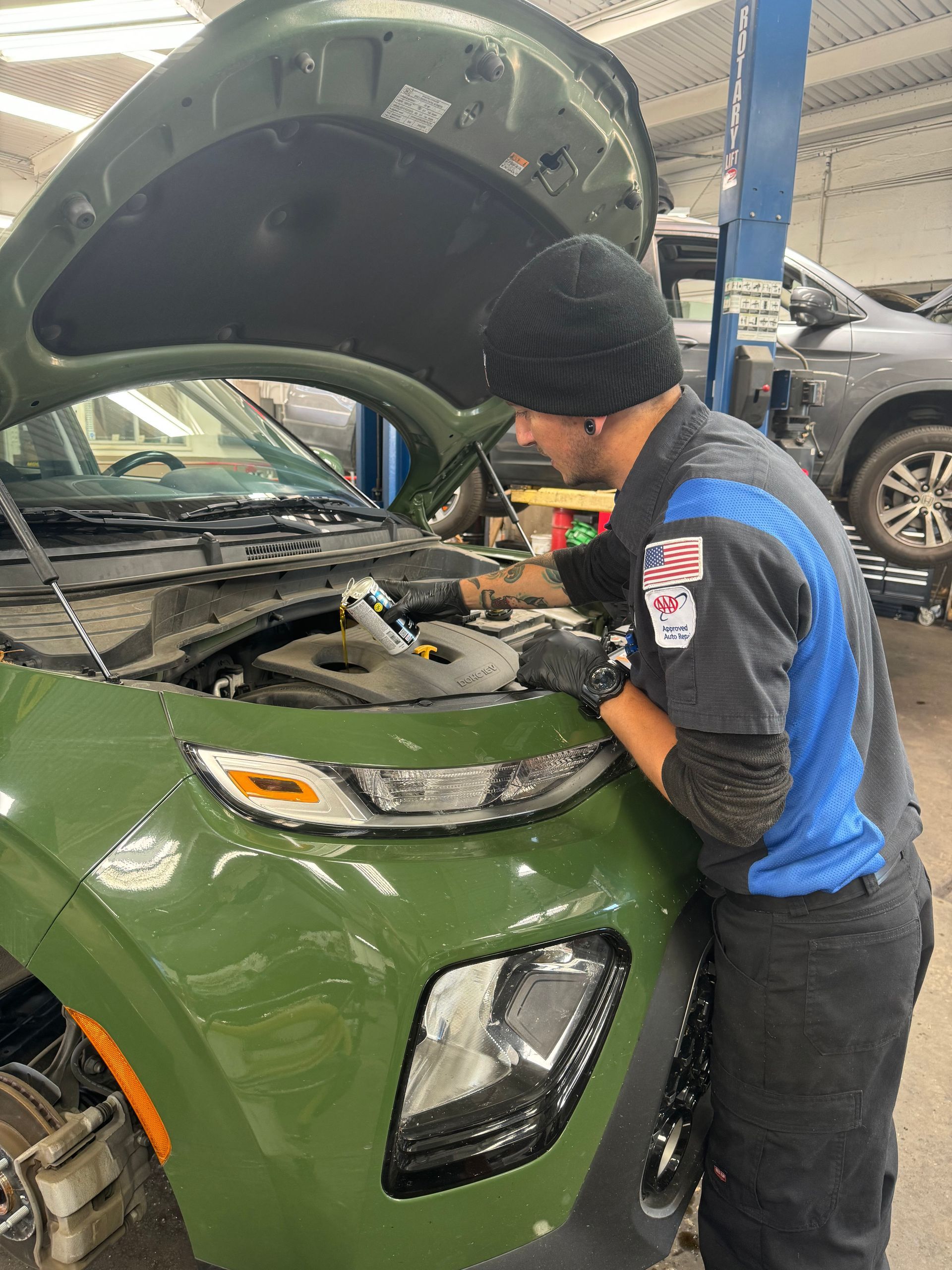
By Bryna Christensen
•
March 17, 2025
St. Patrick’s Day is a time to celebrate all things Irish—luck, green, and a bit of festive fun. While the Irish may have their lucky charms, you don’t want to leave your vehicle’s health up to chance. At Eureka Brake & Automotive, we believe in making your own luck when it comes to vehicle maintenance. Here’s how you can ensure your vehicle is as reliable as a four-leaf clover this St. Patrick’s Day and beyond! 1. DON’T RELY ON LUCK: SCHEDULE REGULAR MAINTENANCE Just like finding a four-leaf clover, keeping your vehicle in top condition requires a bit of effort. Regular maintenance is the key to preventing unexpected breakdowns and costly repairs. From oil changes to brake inspections, staying on top of routine services ensures your vehicle runs smoothly and safely all year long. 2. AVOID BRAKE BLUNDERS: CHECK YOUR BRAKES Your brakes are one area where you definitely don’t want to push your luck. Worn brake pads, low brake fluid, or squeaky brakes are all signs that your braking system needs attention. This St. Patrick’s Day, let us give your brakes a thorough inspection to ensure they’re ready to handle any sudden stops—whether you’re avoiding a pothole or a parade route! 3. KEEP YOUR TIRES HAPPY: CHECK ALIGNMENT AND PRESSURE Properly aligned and inflated tires are essential for a safe and comfortable ride. Misaligned wheels can cause uneven tire wear, reducing their lifespan and impacting your car’s handling. Before you head out to celebrate, make sure your tires are ready for the journey. If you’ve hit a few too many potholes this winter, it might be time for a wheel alignment check. 4. DON’T LET YOUR BATTERY RUN OUT OF LUCK Cold weather can take a toll on your vehicle’s battery, and a weak battery could leave you stranded when you least expect it. This St. Patrick’s Day, have your battery tested to ensure its fully charged and ready to go. If your battery is showing signs of age, consider replacing it before it runs out of luck. 5. STAY COOL: CHECK YOUR COOLANT LEVELS As the weather starts to warm up, it’s important to keep your engine cool. Low coolant levels can lead to overheating, which can cause serious damage to your engine. Make sure your coolant levels are topped off and your radiator is in good condition so your car can handle the spring and summer heat. This St. Patrick’s Day, don’t leave your vehicle’s health to the luck of the Irish. By taking a proactive approach to maintenance, you can ensure your vehicle is ready for any adventure—whether you’re heading to a parade, a party, or just enjoying a drive through town. At Eureka Brake & Automotive, we’re here to help you keep your vehicle in top shape, so you can focus on celebrating the greenest day of the year. Sláinte to safe and happy driving! Schedule an appointment online or call us now at 707-443-2122! *Stay connected with us on social media for updates, tips, and special offers throughout the year. We love hearing from you and are always here to help with any automotive questions or needs you might have.
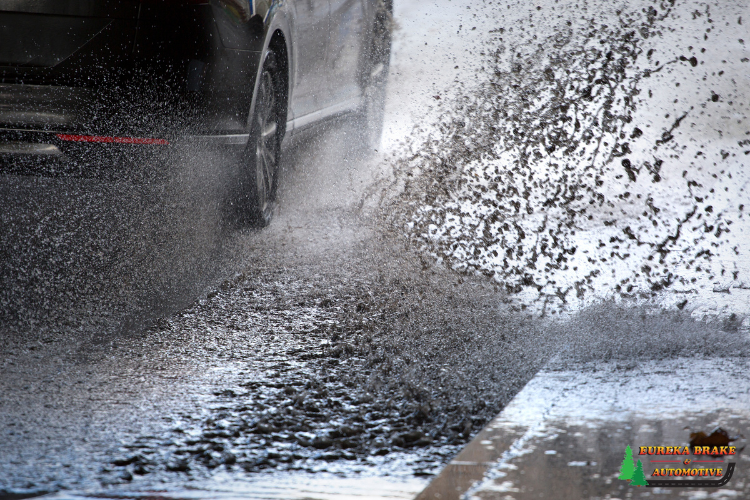
By Bryna Christensen
•
March 10, 2025
Driving in wet conditions can be challenging, especially when you encounter heavy rain or standing water on the road. One of the most dangerous situations you might face is hydroplaning, which occurs when your vehicle's tires lose contact with the road surface and glide on a thin layer of water. Hydroplaning can cause a sudden loss of control, leading to skidding or even a crash. Understanding what to do if your vehicle hydroplanes and how to prevent it can keep you safe during wet weather. When your vehicle begins to hydroplane, it’s crucial to stay calm and avoid any sudden movements. The instinct to brake hard or jerk the steering wheel can make the situation worse. Instead, gently ease off the accelerator to allow your vehicle to slow down naturally. Keep a steady grip on the steering wheel and try to steer straight. If you feel the vehicle pulling in one direction, make slight corrections to keep it on course, but avoid oversteering. If you’re driving a vehicle with anti-lock brakes (ABS), you can gently apply the brakes while steering to regain control. For vehicles without ABS, it’s important to avoid braking until your tires regain traction with the road. Once you feel the tires reconnecting with the pavement, you can gradually brake and steer your vehicle back on track. The best way to deal with hydroplaning is to prevent it from happening in the first place. Start by ensuring that your tires are in good condition. Worn-out tires with low tread depth are more likely to lose traction on wet roads. Regularly check your tire pressure as well, since underinflated tires can increase the risk of hydroplaning. When driving in wet conditions, reduce your speed and avoid sudden accelerations. The faster you drive, the harder it is for your tires to disperse water, increasing the chances of hydroplaning. Stick to the middle lane, if possible, as water tends to pool in the outer lanes. Also, try to avoid driving through large puddles or areas where water is visibly standing on the road. Maintaining a safe following distance from the vehicle in front of you is also important. This gives you more time to react if your vehicle or the vehicle ahead begins to hydroplane. If you notice heavy rain or water accumulation on the road, turn off cruise control to ensure you have full control over your vehicle’s speed. By staying alert and taking these precautions, you can reduce the likelihood of hydroplaning and navigate wet roads with confidence. But if your vehicle does hydroplane, remember that staying calm and gently guiding your vehicle back under control is the key to avoiding an accident. At Eureka Brake & Automotive, we’re committed to your safety on the road. If you have concerns about your tires or vehicle performance in wet conditions, visit us for a comprehensive check-up to ensure you’re ready for any weather. Schedule an appointment: Online or call us now at 707-443-2122! *Stay connected with us on social media for updates, tips, and special offers throughout the year. We love hearing from you and are always here to help with any automotive questions or needs you might have.
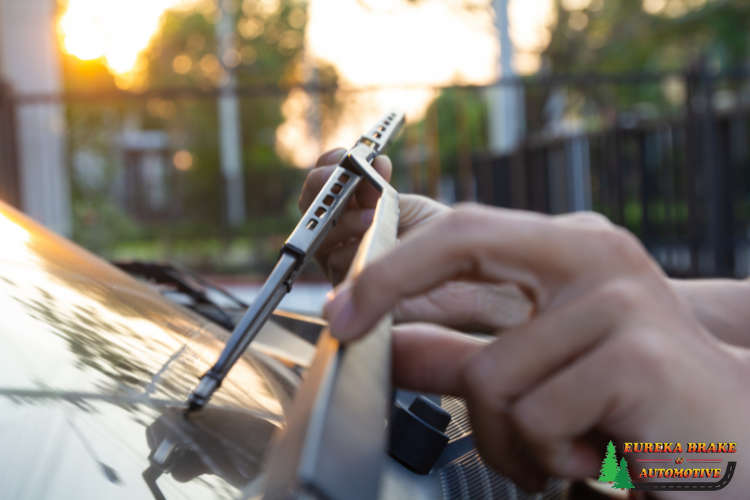
By Bryna Christensen
•
March 3, 2025
When it comes to vehicle safety, many drivers focus on the big-ticket items like brakes and tires. But there’s another essential component that’s often overlooked: your windshield wipers. Wiper blades and wiper fluid play a critical role in maintaining clear visibility on the road, and neglecting them can compromise your safety. At Eureka Brake & Automotive, we want to ensure you’re driving with the clearest view possible, no matter the weather. Here’s why keeping your wiper blades and fluid in top condition is so important. 1. WHY WIPER BLADES MATTER Wiper blades are your first line of defense against rain, snow, sleet, and even dirt and debris that can accumulate on your windshield. Over time, wiper blades can wear out, becoming brittle, cracked, or even torn. When this happens, they can leave streaks or miss spots on your windshield, reducing your visibility and making driving more hazardous. Regularly inspecting and replacing your wiper blades ensures you have a clear view of the road, no matter the conditions. 2. SIGNS YOUR WIPER BLADES NEED REPLACING It’s important to recognize the signs that your wiper blades are due for replacement. Here are a few indicators: Streaking: If your wipers leave streaks on your windshield, it’s a sign the rubber has worn down. Skipping: If the wipers skip or chatter across the glass, it means they’re not making full contact with the windshield. Cracks or Tears: Visible damage to the rubber blades means they can no longer do their job effectively. Noisy Operation: Squeaking or squealing sounds indicate that the blades are worn out or have become hard and brittle. If you notice any of these signs, it’s time to replace your wiper blades. It’s a simple and affordable fix that can make a big difference in your driving safety. 3. THE ROLE OF WIPER FLUID Wiper fluid is just as important as the blades themselves. It’s specially formulated to break down dirt, grime, bugs, and even ice, ensuring your windshield remains clear. Running out of wiper fluid or using plain water instead can be a safety hazard. Water can freeze in cold weather, and it doesn’t have the cleaning power to remove tough debris. Make sure to keep your wiper fluid reservoir full and top it off regularly. If you live in an area with harsh winters, consider using a winter-specific wiper fluid that prevents freezing and helps de-ice your windshield. 4. WHEN TO CHECK AND REPLACE YOUR WIPER BLADES AND FLUID Regular maintenance is key to ensuring your wipers work when you need them most. Here’s a quick checklist to keep in mind: Inspect Wiper Blades Every 6 Months: Look for signs of wear and replace them if necessary. Refill Wiper Fluid Monthly: Make it a habit to check your wiper fluid reservoir regularly and refill it as needed. Prepare for Seasonal Changes: Before the rainy season or winter weather hits, make sure your wipers and fluid are ready to handle the elements. Don’t underestimate the importance of wiper blades and fluid in your vehicle’s safety. By staying on top of maintenance, you’ll ensure that you always have a clear view of the road ahead. Stop by Eureka Brake & Automotive today to have your wipers checked or replaced—we’ll make sure you’re prepared for whatever Mother Nature throws your way! Schedule an appointment online or call us now at 707-443-2122! *Stay connected with us on social media for updates, tips, and special offers throughout the year. We love hearing from you and are always here to help with any automotive questions or needs you might have.
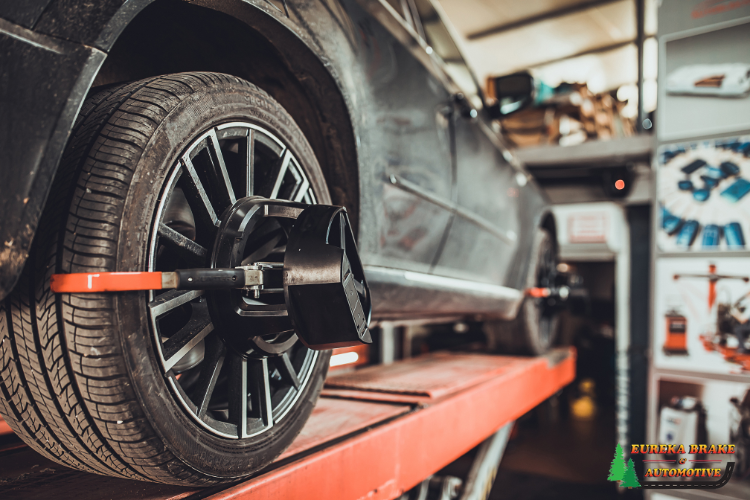
By Bryna Christensen
•
February 24, 2025
Whether it’s a minor fender-bender or a more significant collision, any impact can have hidden effects on your vehicle that aren’t always immediately noticeable. One critical aspect of your vehicle’s health that can be compromised in an accident is its wheel alignment. Ensuring your wheels are properly aligned after an impact is crucial for several reasons, and neglecting this essential maintenance step can lead to more significant issues down the road. 1. PRESERVING TIRE HEALTH : A misaligned wheel can cause uneven tire wear, which reduces the lifespan of your tires. If your wheels are not aligned correctly, certain areas of the tires may wear out faster than others, leading to a need for premature replacement. Given the cost of tires, keeping them in good condition is vital, and a proper wheel alignment is a key part of that. 2. ENSURING SAFE HANDLING : Your vehicle’s handling is directly affected by its wheel alignment. Misalignment can cause your vehicle to pull to one side, making it difficult to maintain a straight path. This not only makes driving more challenging but can also be dangerous, especially in emergency situations where precise control is essential. After any impact, it’s important to check the alignment to ensure your vehicle handles as it should. 3. IMPROVING FUEL EFFICIENCY: When your wheels are misaligned, your vehicle has to work harder to move down the road. This extra effort results in higher fuel consumption, which means you’ll be spending more at the pump. By ensuring your wheels are properly aligned, you can improve your vehicle’s fuel efficiency, saving you money in the long run. 4. PREVENTING LONG-TERM DAMAGE : A seemingly minor misalignment can lead to more significant issues if left unaddressed. Misalignment can put undue stress on your vehicle’s suspension and steering components, leading to early wear and potential failure. By correcting the alignment after an impact, you can avoid more costly repairs down the line and extend the life of your vehicle’s critical systems. 5. MAINTAINING VEHICLE STABILITY : Proper alignment ensures that all four wheels work in harmony, providing stability and balance while driving. A misaligned vehicle can feel unstable, particularly at higher speeds or when making sharp turns. This instability not only makes for an uncomfortable ride but also increases the risk of losing control of the vehicle. Following any impact or collision, it’s essential to have your vehicle’s wheel alignment checked by a professional. While the damage may not be visible, misalignment can have serious consequences for your vehicle’s safety, performance, and longevity. At Eureka Brake & Automotive, we specialize in wheel alignments and can help ensure your vehicle is in top condition after an accident. Don’t let a minor issue turn into a major problem—schedule your wheel alignment with us today! Schedule online or call us now at 707-443-2122! *Stay connected with us on social media for updates, tips, and special offers throughout the year. We love hearing from you and are always here to help with any automotive questions or needs you might have.
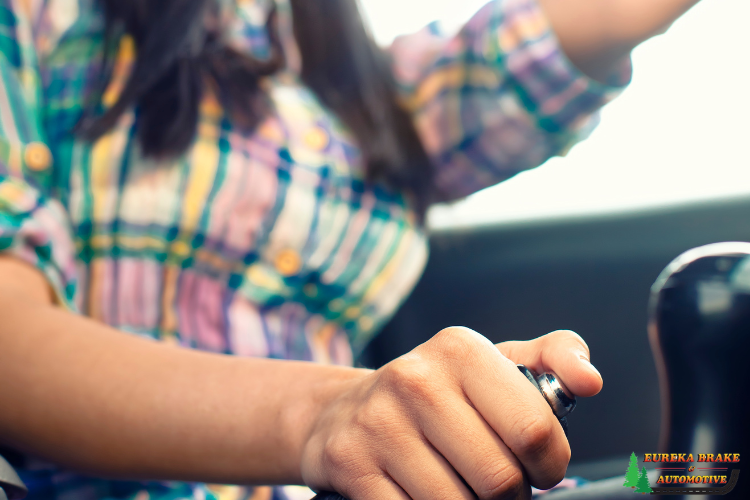
By Bryna Christensen
•
February 17, 2025
We all have driving habits that we may not think twice about, but some of these can cause unnecessary wear and tear on our vehicles. To help you keep your vehicle in top shape, here are five common driving habits that might be damaging your vehicle and tips on how to avoid them. 1. Riding the Brakes Downhill Keeping your foot on the brake while driving downhill can cause your brake pads to wear out prematurely. Instead, downshift to a lower gear and let engine braking help control your speed. 2. Revving the Engine When It's Cold Revving a cold engine right after starting it might seem harmless, but it can actually cause significant damage. Engines need time to warm up, so give your engine a minute or two to reach operating temperature before accelerating. 3. Overloading Your Vehicle Exceeding your vehicle’s load capacity can strain the suspension, brakes, and drivetrain, leading to costly damage and reduced performance. Always stay within the recommended weight limit specified in your vehicle’s manual. 4. Ignoring Tire Maintenance Failing to check tire pressure, rotate tires, or get alignments can lead to uneven wear, reduced fuel efficiency, and even blowouts. Regular tire maintenance is essential for safe and efficient driving. 5. Not Using the Parking Brake Even in an automatic vehicle, not using the parking brake can put undue stress on the transmission. The parking brake is designed to hold your vehicle in place, and relying solely on the transmission can lead to premature wear and expensive repairs. By being mindful of these driving habits, you can save money on repairs and keep your vehicle running smoothly for years to come. If you have concerns about your vehicle’s condition, Eureka Brake & Automotive is here to help. Don’t hesitate to reach out to us for expert advice and service! Schedule online or call us now at 707-443-2122! *Stay connected with us on social media for updates, tips, and special offers throughout the year. We love hearing from you and are always here to help with any automotive questions or needs you might have.

By Bryna Christensen
•
February 10, 2025
Valentine’s Day is all about showing love and appreciation for the important things in our lives—and that includes your vehicle! Your car, truck, or SUV works hard to keep you safe and comfortable on the road, so why not take a moment to give it a little TLC this Valentine’s Day? At Eureka Brake & Automotive, we believe that caring for your vehicle is the best way to ensure it runs smoothly and reliably for years to come. Here are some simple ways to show your vehicle some love this Valentine’s Day. 1. SCHEDULE A ROUTINE MAINTENANCE CHECK-UP - Just like any relationship, regular attention is key to keeping things running smoothly. Scheduling routine maintenance is the best way to catch small issues before they turn into big problems. Whether it’s an oil change, fluid top-off, or brake inspection, giving your vehicle the maintenance it needs is a great way to show it some love. 2. TREAT YOUR VEHICLE TO A WASH AND WAX - Your vehicle deserves to look its best! A thorough wash and wax not only makes your vehicle shine, but it also protects the paint from dirt, grime, and the elements. Plus, a clean vehicle is more enjoyable to drive. Show your vehicle some affection by taking it to a car wash or giving it a hand wash and wax at home. 3. CHECK AND MAINTAIN YOUR TIRES - Your tires are your vehicle’s connection to the road, so it’s essential to keep them in top condition. This Valentine’s Day, take some time to check your tire pressure, tread depth, and overall condition. Properly inflated and well-maintained tires improve fuel efficiency, handling, and safety. If your tires are showing signs of wear, consider investing in a new set to keep your vehicle rolling smoothly. 4. TOP OFF FLUIDS AND CHANGE YOUR OIL - Show your engine some love by making sure all its vital fluids are topped off and in good condition. This includes engine oil, transmission fluid, coolant, brake fluid, and windshield washer fluid. Regular oil changes are especially important for keeping your engine running smoothly and efficiently. If you’re due for an oil change, don’t wait—give your vehicle the gift of fresh oil and a new filter. 5. INSPECT AND REPLACE WIPER BLADES - Wiper blades are often overlooked, but they play a crucial role in keeping your windshield clear and your visibility high. If your wiper blades are streaking, skipping, or leaving spots, it’s time to replace them. New wiper blades are an inexpensive way to show your vehicle some love and ensure you’re ready for whatever weather comes your way. 6. SHOW YOUR INTERIOR SOME LOVE - Don’t forget about the inside of your vehicle! A clean and organized interior makes driving more enjoyable and less stressful. Vacuum the carpets, wipe down the dashboard, and clean the windows to create a fresh, comfortable environment. You might even consider adding a new air freshener or seat covers for an extra touch of luxury. 7. GET A BRAKE INSPECTION - Your brakes are one of th e most critical safety components of your vehicle, so it’s important to keep them in excellent condition. If you’ve noticed any signs of brake wear, such as squeaking, grinding, or a soft pedal, it’s time for an inspection. At Eureka Brake & Automotive, we can help ensure your brakes are in top shape, giving you peace of mind every time you hit the road. 8. UPGRADE YOUR LIGHTS - Valentine’s Day is all about brightening someone’s day—why not do the same for your vehicle? Upgrading your headlights to brighter, more efficient bulbs can improve nighttime visibility and give your vehicle a modern look. Don’t forget to check your taillights, brake lights, and turn signals to make sure they’re all functioning properly. Your vehicle is always there for you, whether it’s getting you to work, taking you on road trips, or simply helping you run errands. This Valentine’s Day, show your car, truck, or SUV some love by giving it the care and attention it deserves. At Eureka Brake & Automotive, we’re here to help with all your vehicle maintenance needs, from routine check-ups to specialized repairs. Treat your vehicle right, and it will reward you with years of reliable service. Happy Valentine’s Day from Eureka Brake & Automotive—where we love your vehicle as much as you do! ♥️ Eureka Brake & Automotive or call us now at 707-443-2122! *Stay connected with us on social media for updates, tips, and special offers throughout the year. We love hearing from you and are always here to help with any automotive questions or needs you might have.
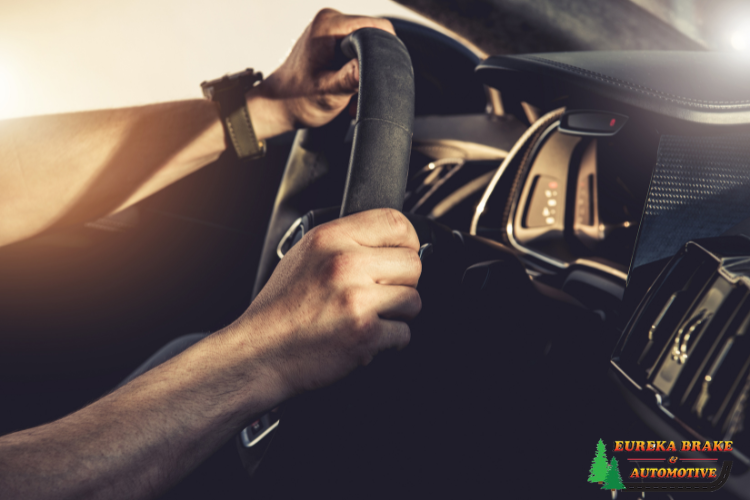
By Bryna Christensen
•
February 3, 2025
Ever notice your vehicle pulling to one side while driving? It’s not just an annoyance; it’s a sign that something isn’t quite right. Eureka Brake & Automotive is here to help you understand why this happens and what you can do about it. A vehicle pulling to one side can be caused by several issues, some of which can affect your safety on the road. Here’s a breakdown of the most common causes and how to address them: 1. WHEEL ALIGNMENT ISSUES One of the most common reasons for a vehicle pulling to one side is poor wheel alignment. When your wheels are out of alignment, they don’t point in the same direction, causing your vehicle to drift to one side. Misalignment can occur from everyday driving, especially if you frequently drive on rough or uneven roads, hit potholes, or accidentally bump into curbs. Solution: A professional wheel alignment service can correct this issue, ensuring your wheels are perfectly aligned and your vehicle drives straight. 2. UNEQUAL TIRE PRESSURE Another common cause is uneven tire pressure. If one of your tires has less air than the others, it can create an imbalance that causes your vehicle to pull to the side with the lower pressure. This issue is usually easy to fix but can lead to uneven tire wear and reduced fuel efficiency if not addressed promptly. Solution: Regularly check your tire pressure and ensure all tires are inflated to the manufacturer’s recommended levels. If you’re unsure, stop by Eureka Brake & Automotive, and we’ll check it for you. 3. BRAKE SYSTEM PROBLEMS If your vehicle pulls to one side when you apply the brakes, it could indicate a problem with your brake system. Common issues include a stuck brake caliper, uneven brake pad wear, or a brake fluid leak. These problems can cause one side of your brakes to engage more forcefully than the other, leading to the pulling sensation. Solution: Have your brakes inspected by a professional to diagnose and resolve the issue. Brake problems should be addressed immediately to ensure your safety on the road. 4. TIRE WEAR Uneven tire wear can also cause your vehicle to pull to one side. Tires can wear unevenly due to improper alignment, unbalanced wheels, or driving habits. When one tire is more worn than the others, it can create an imbalance, leading to pulling. Solution: Inspect your tires regularly for signs of uneven wear and rotate them as recommended in your vehicle’s maintenance schedule. If the wear is severe, it may be time to replace the tires. 5. SUSPENSION ISSUES Your vehicle’s suspension system is responsible for providing a smooth ride and maintaining proper wheel alignment. If components of the suspension system, such as struts, shocks, or control arms, are worn or damaged, it can cause your vehicle to pull to one side. Solution: Suspension issues require professional diagnosis and repair. If you suspect a suspension problem, bring your vehicle to Eureka Brake & Automotive for a thorough inspection. 6. TORQUE STEER Torque steer is a phenomenon that occurs mainly in front-wheel-drive vehicles when acceleration causes the vehicle to pull to one side. This can happen if the power being delivered to the front wheels is uneven, often due to differences in the length or condition of the drive shafts. Solution: If you experience torque steer, particularly under heavy acceleration, it’s a good idea to have your vehicle inspected by a professional to determine the cause and appropriate solution. 7. ROAD CONDITIONS Sometimes, your vehicle pulling to one side isn’t due to a mechanical issue but rather the road itself. Roads that are crowned (higher in the center than at the edges) can cause your vehicle to drift slightly to the side. This is a natural occurrence and usually not something to worry about unless the pulling is severe or occurs on flat roads. Solution: If the pulling only occurs on certain roads, it’s likely due to the road conditions. However, if the pulling persists on various types of roads, have your vehicle checked for one of the other issues listed above . Ignoring a vehicle that pulls to one side can lead to more significant problems down the road, including: Increased Tire Wear: Uneven wear can shorten the lifespan of your tires, leading to premature replacements. Poor Fuel Efficiency: Misalignment and improper tire pressure can reduce your vehicle’s fuel efficiency. Safety Hazards: Braking issues and suspension problems can compromise your ability to control the vehicle, putting you and others at risk. If your vehicle is pulling to one side, it’s essential to address the issue promptly to avoid further damage and ensure your safety. At Eureka Brake & Automotive, we’re here to diagnose and fix the problem, whether it’s an alignment issue, brake concern, or something else. Don’t ignore the signs—schedule an appointment with us today, and let us help you get back on the road safely. Schedule online or call us now at 707-443-2122! *Stay connected with us on social media for updates, tips, and special offers throughout the year. We love hearing from you and are always here to help with any automotive questions or needs you might have.

By Bryna Christensen
•
January 27, 2025
Living near the coast has its perks—beautiful ocean views, cool breezes, and serene landscapes. But it also comes with a unique driving challenge; coastal fog. This thick, heavy fog can roll in quickly, reducing visibility and making driving conditions hazardous. At Eureka Brake & Automotive, we want to ensure you’re prepared to handle these conditions safely. Here’s a guide on how to drive in coastal fog and keep yourself and others safe on the road. Coastal fog forms when moist air from the ocean meets cooler land temperatures. This combination creates a dense layer of fog that can significantly reduce visibility, sometimes to just a few feet ahead. Coastal fog is particularly common in the early morning and late evening but can appear at any time of day. TIPS FOR DRIVING SAFELY IN COASTAL FOG 1. SLOW DOWN- The most crucial rule for driving in fog is to reduce your speed. Fog limits your visibility and reaction time, making it harder to see obstacles, road signs, or other vehicles. Slowing down gives you more time to react and reduces the likelihood of accidents. 2. USE YOUR LOW BEAMS - Always use your low-beam headlights when driving in fog. High beams can reflect off the fog and create a "white wall" effect, making it even harder to see. Low beams provide better visibility by illuminating the road directly in front of you without causing excessive glare. 3. TURN ON YOUR FOG LIGHTS - If your vehicle is equipped with fog lights, use them in addition to your low beams. Fog lights are designed to cut through the fog and provide additional illumination close to the ground, helping you see the road better. 4. INCREASE FOLLOWING DISTANCE- In foggy conditions, it’s essential to maintain a greater distance between your vehicle and the one in front of you. This increased following distance gives you more time to react if the vehicle ahead suddenly stops or slows down. 5. USE THE RIGHT EDGE OF THE ROAD AS A GUIDE - When visibility is severely reduced, use the right edge of the road or the fog line (the solid white line on the right side of the road) as a guide. This will help you stay in your lane and avoid veering into oncoming traffic. 6. AVOID SUDDEN MOVEMENTS- Make all movements—steering, accelerating, and braking—smooth and gradual. Sudden movements can cause your vehicle to skid or lose control, especially in wet conditions often associated with coastal fog. 7. TURN OFF CRUISE CONTROL - Do not use cruise control when driving in fog. Cruise control can prevent you from adjusting your speed quickly if road conditions change suddenly. It’s best to stay in full control of your vehicle’s speed. 8. BE MINDFUL OF PEDESTRIANS AND CYCLISTS - Coastal areas often have pedestrian and cyclist traffic, even in foggy conditions. Be extra vigilant for people crossing the road or cycling, as they may be harder to see in the fog. 9. PULL OVER IF NECESSARY - If the fog becomes too thick and you feel uncomfortable driving, find a safe place to pull over and wait until visibility improves. Turn on your hazard lights to alert other drivers to your presence. PREPARING YOUR VEHICLE FOR FOGGY CONDITIONS Check Your Lights: Ensure all your vehicle’s lights—headlights, taillights, fog lights, and turn signals are functioning correctly before you hit the road. This will also allow you to become familiar with them and where they are located. Clean Your Windshield: A dirty windshield can worsen glare from oncoming headlights in fog. Keep your windshield clean inside and out for optimal visibility. Maintain Your Wipers: Good windshield wipers are crucial for keeping your view clear, especially if the fog is accompanied by moisture or rain. Replace wipers that leave streaks or don’t clear the windshield effectively. Keep a Safe Speed: Coastal roads can be winding and unpredictable. Even without fog, these roads require careful driving. Add fog to the mix, and it becomes even more critical to drive at a safe speed. Driving in coastal fog requires extra caution and attention, but by following these tips, you can navigate through foggy conditions safely. At Eureka Brake & Automotive, we’re committed to your safety on the road. Whether you need a light check, wiper blade replacement, or any other service to prepare for foggy weather, we’re here to help. Stay safe, drive carefully, and don’t hesitate to contact Eureka Brake & Automotive for all your vehicle maintenance needs! Schedule online or call us now at 707-443-2122! *Stay connected with us on social media for updates, tips, and special offers throughout the year. We love hearing from you and are always here to help with any automotive questions or needs you might have.
Family’s Legacy of Skilled Automotive Technicians and Shop owners
Services
List of Services





Services
List of Services
© 2024 Eureka Brake & Automotive | Auto Repair Eureka, CA. All Rights Reserved | Website managed by Shopgenie